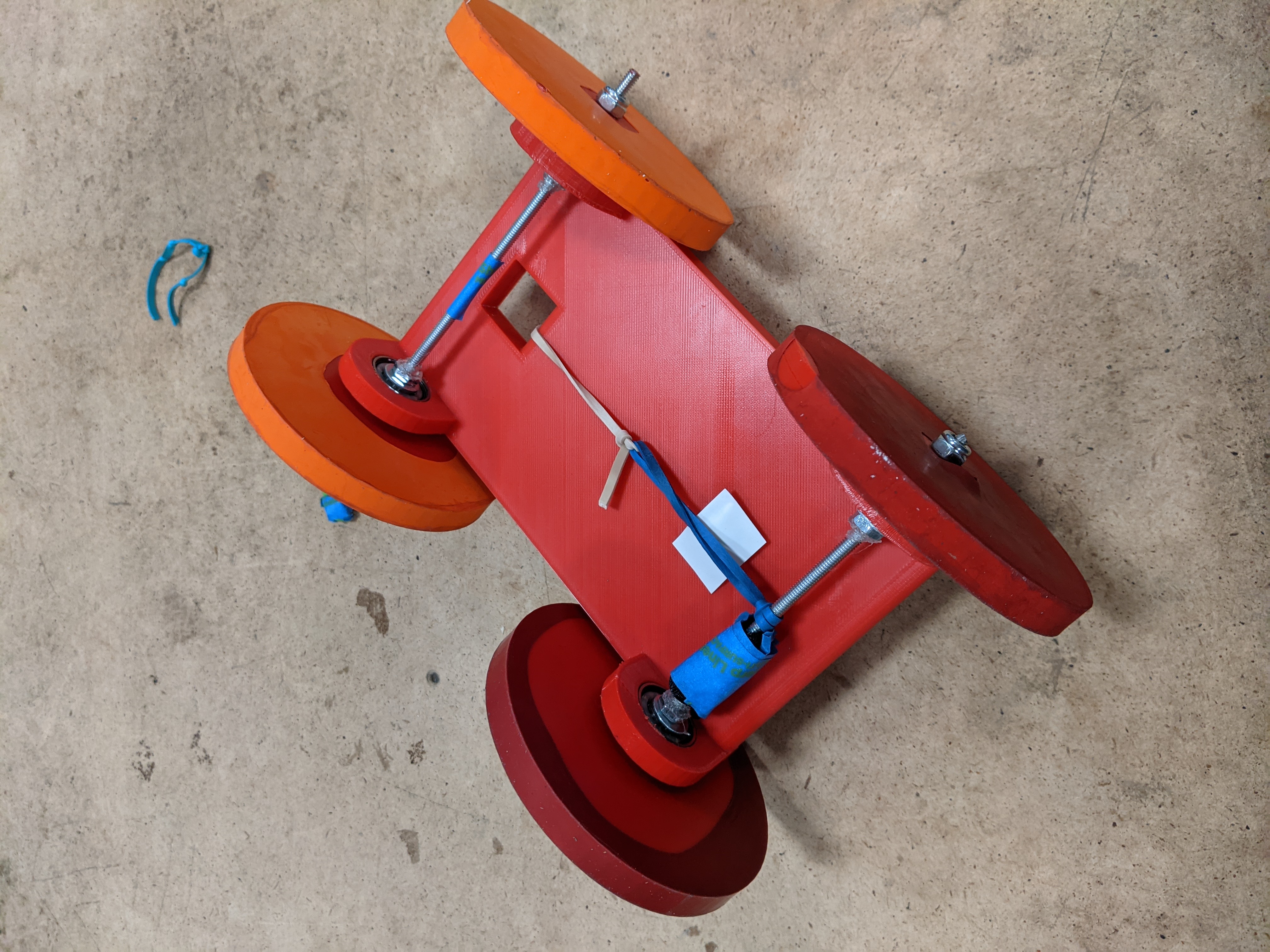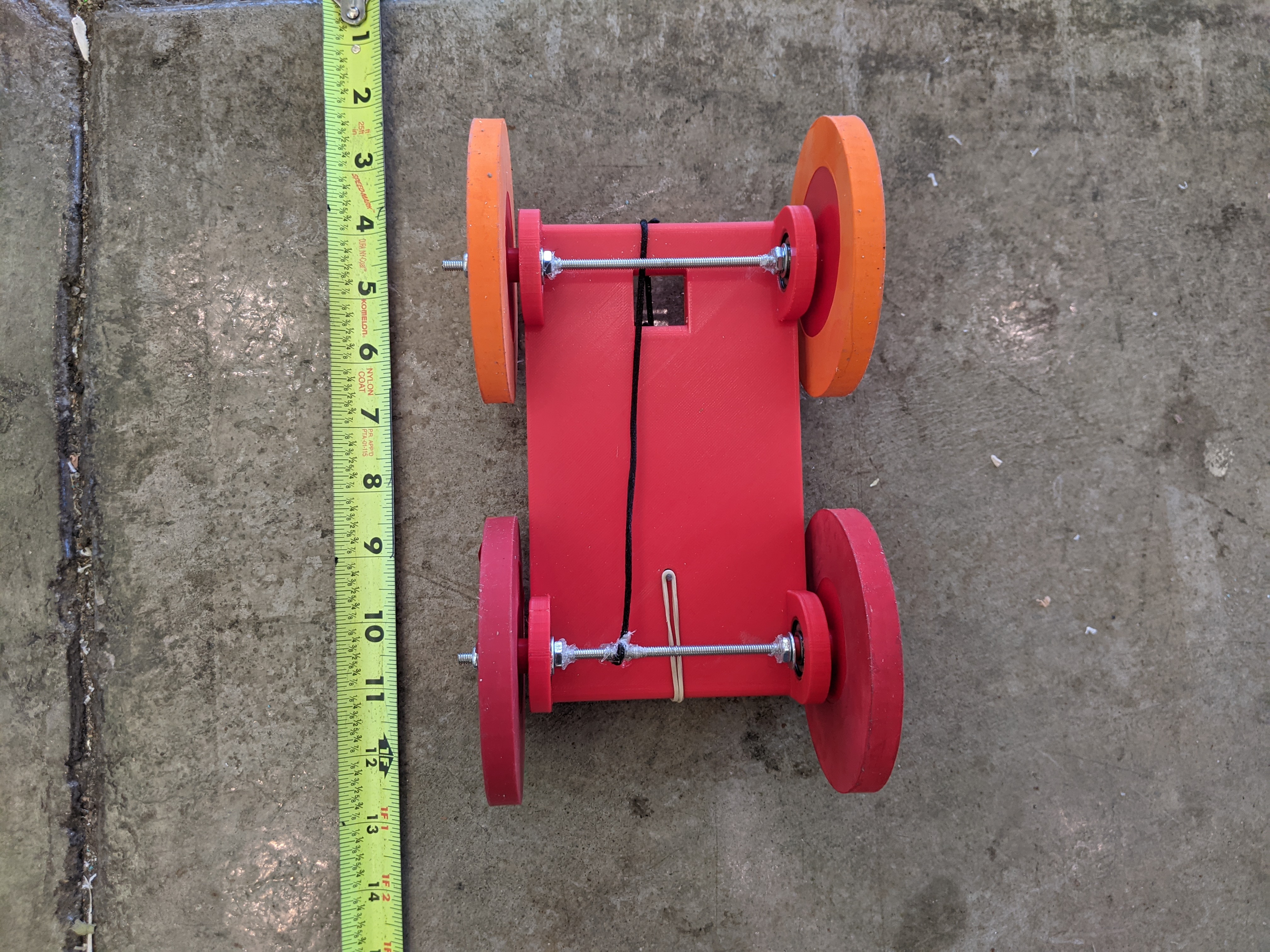Dec 2021

Project Description
Design a self-propelled vehicle that can travel a distance of 5-10 feet and stop at a pre-determined location. No eletronic motors or batteries. Your vehicle must fit inside a 12 inch cube. The total cost can't exceed $30.
Development
This was group project during my first engineering course at Cal Poly. We started protyping different designs and propulsion mechanisms. In the end, rubber bands seemed the most reliable and accurate, since they could both accelerate and deccelarate the vehicle. Over fall break, I 3d printed a custom chassis for the vehicle. I decided to use a string attached to the axle instead of the rubber band directly because I figured this would reduce the stress on the rubber band. I also put balloons around the wheels to increase friction with the smooth concrete in the lab. This is what is looked like at this point.

On test day, however, the rubber bands kept breaking, and we decided to remove the string. This allowed us to pass enough tests to complete the project. Good thing I brought extra rubber bands.
In this project, I learned how it is important to test the edge cases of the problem and not just stick with what is currently working. The rubber bands hadn't broke before test day, but I saw that they were on the verge of breaking many days before. Next time, I will build a more resilient design that is less susceptible to wear.
